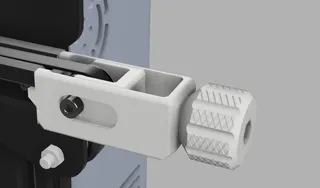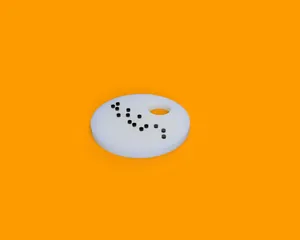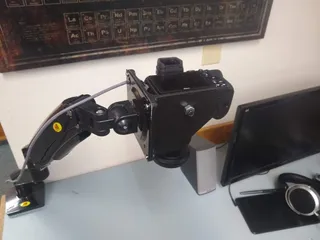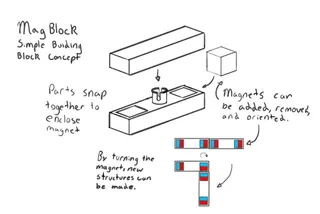Electric Cello
Description
PDFGeneral Note: The files presented in this project have been printed, however, some have been updated slightly to provide more room for certain components and/or to reduce movement of certain components.
Printing:
3D print with the following parameters:
- 6-8 shells (2.4-3.2mm thickness)
- 50% infill (recommended)
- PLA is suitable
Pay special attention to critical parts such as the scroll (where the tuner pegs are) and the body (where the support shaft ends).
Assembly:
- Insert the main support rod into each cello part.
- Insert a small 2mm rod between each part to prevent rotation. If the parts are too tight, use a drill to size the hole to the rod diameter (This can be done by rotating the rod itself and using the heat from the friction to soften the material and widen the hole. DO NOT stop the drill if you choose to do this, it will cool and be hard to get out.)
- After inserting each piece, glue the joint.
- Sand the area around each joint and clean the surface. You can experiment with different methods of gluing such as using acetone to minimize the need to clean up the joint.
Hardware Installation:
- Insert tuners with a scroll piece to increase the bend radius and prevent string breakage.
- Use heat inserts in the holes in the back of the cello body.
- Remove the pre-amp from its plastic face, but keep it in its metal housing.
- Use brass spacers, screws, and bolts to attach the electronics to the back panel.
- Connect the power to the preamp from the power switch and battery, (Warning: These pre-amps come with swapped polarities, + is black and - is red on the pre-amp.)
- Wire the preamp output and connect to rear panel.
- Plug in the piezo microphone by pushing the wire through the front Cello face.
- Screw shut.
Materials Needed:
Pre-Amp: https://www.amazon.com/Yootones-EQ-7545R-Amplifier-Equalizer-Compatible/dp/B0B1M42VWW/ref=sr_1_44?keywords=acoustic+guitar+pickup&qid=1681694277&sprefix=acoustic+guitar+%2Caps%2C157&sr=8-44
6 mm Power Switch and 9V battery connector: Any generic switch and connector will work.
13 mm x 56 cm rod: This rod is the most important part of the build however, may be difficult to source. Included are the STEP files if you would like to modify the diameter of this bore in order to use other shafts. This is the max recommended diameter.
2kg Filament: PLA was used for the first version. I do plan to eventually make a second version.
Tags
Model origin
The author marked this model as their own original creation.




